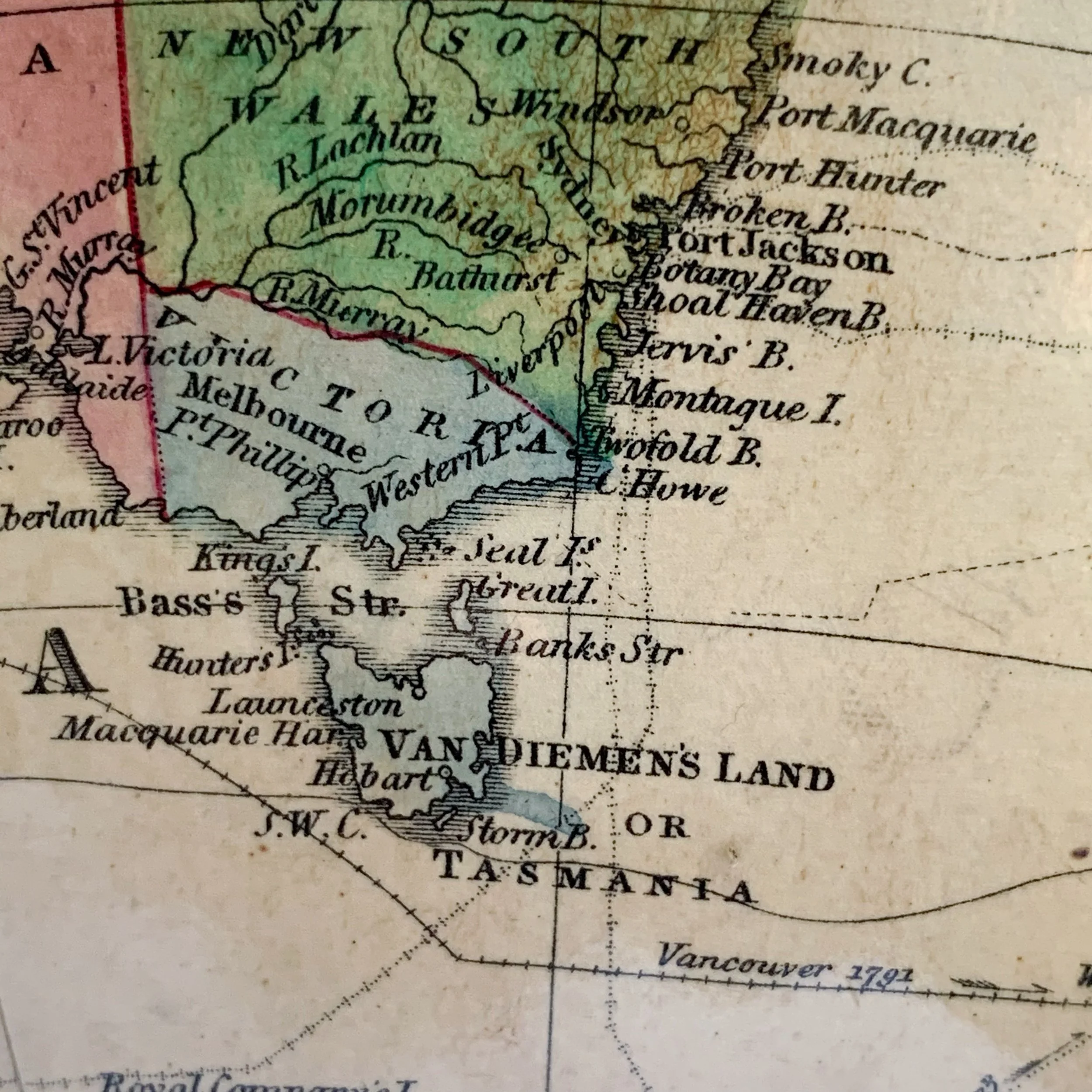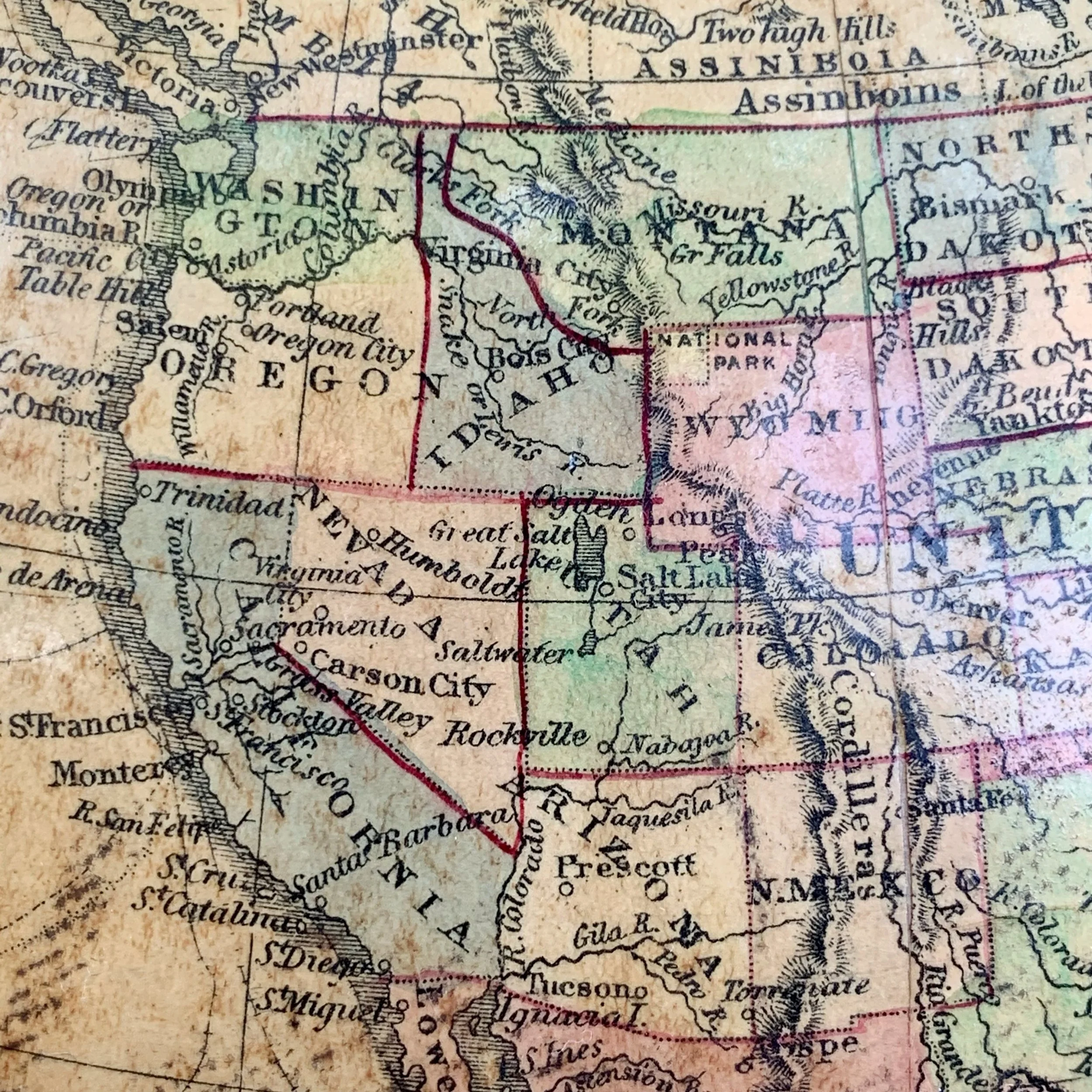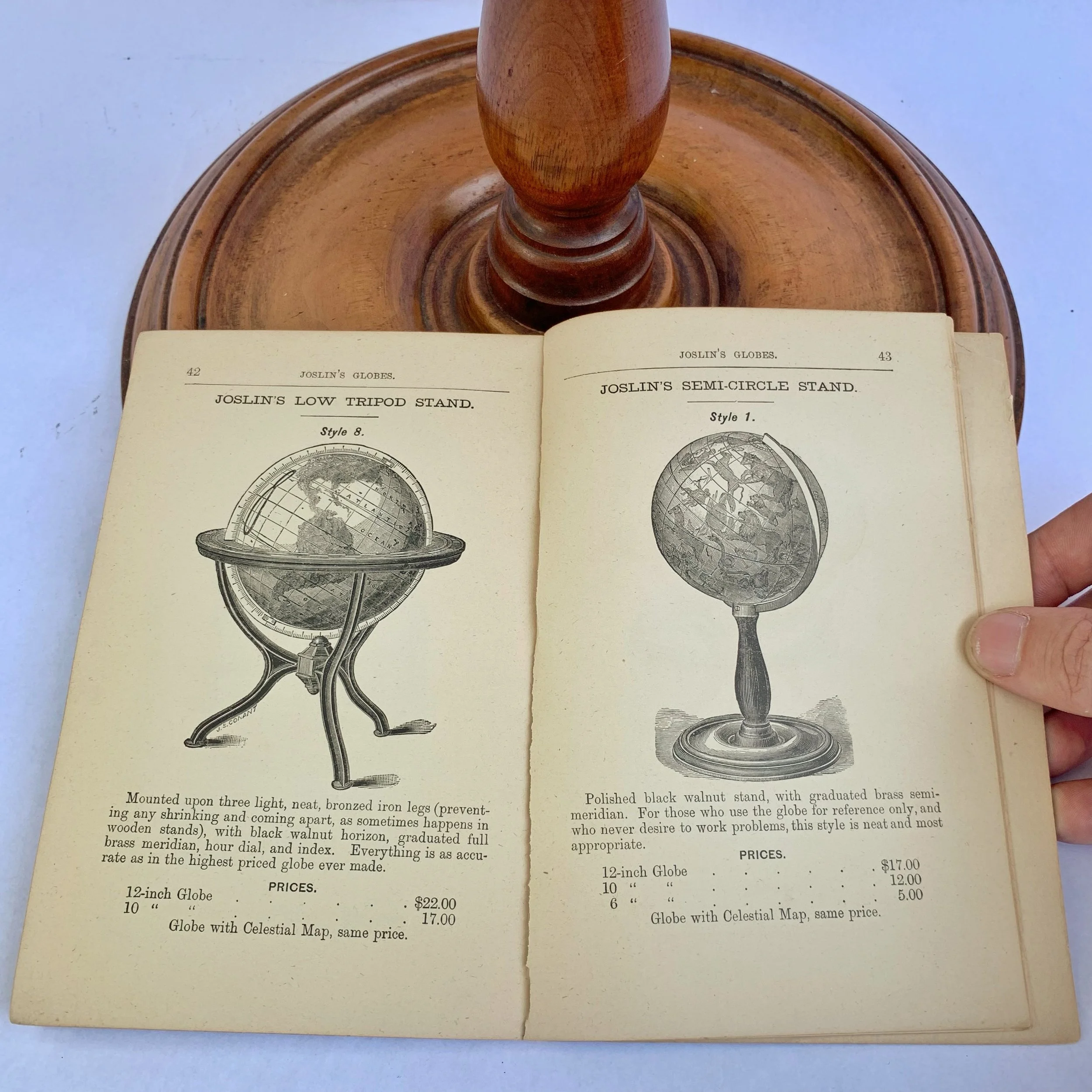Handsome Joslin's Terrestrial Globe Circa 1891-94
Handsome Joslin's Terrestrial Globe Circa 1891-94
This Joslin’s terrestrial globe presents the world of the early 1890’s in wonderful detail. One can view the German, Austro-Hungarian, Russian and British Empire and its colonies throughout the world, especially in Africa. The Turkish Empire is well documented, expanded throughout what is today Syria, Greece and beyond. The discovery of colonies and countries no longer in existence today will ensure hours of entertainment.
This sphere is truly a splendid piece in design and content. No matter where displayed, it will demand attention.
Cartouche reads as follows:
Joslin's TERRESTRIAL GLOBE containing all THE LATE DISCOVERIES and GEOGRAPHICAL IMPROVEMENTS also the Tracks of the most celebrated circumnavigators, Compiled from Smith's new English globe, with additions and improvements by Annin & Smith. Revised by G.W. Boynton. Manufactured by Gilman Joslin, Boston.
Description:
Made up of twelve copper plate engraved, hand-colored and hand applied paper gores over a plaster orb. Mounted into a brass numeric engraved half meridian and set on a turned wood base. Diameter of the orb is 12 inches with the total height at about 22.5 inches. Very well preserved with minor wear appropriate for its age. There is a small piece of clear tape over a portion of the Iberian peninsula as seen in the photos. Warm patina. The meridian has a slight wobble as it sits in the base but a simple wedge will hold firm.
As an added bonus, the original handbook is included with purchase. The booklet features a summary of how to use your globe and a listing of the full line up of models and variations available at the time.
History of the Globe Maker:
Trained as a wood turner and looking-glass maker, Gilman Joslin (1804-1886) went to work for pioneering Boston globe maker Josiah Loring in 1837. He took over Loring’s business by 1839, and that year he issued the first globes under his own name, a terrestrial and celestial pair 6” in diameter. By mid century, Joslin employed three men and two women and boasted a 3-horsepower steam engine for his production. The women more likely applied the paper gores to the spheres. Joslin was eventually succeeded by his son William, and their firm produced globes of various sizes through the end of the 19th century. Joslin worked in many fields in addition to making globes: he was one of the first Americans to make a daguerreotype and was engaged in shipbuilding.
Age of the globe has been based on political borders displayed, which are as follows:
Dakota divided into North and South (1889), Indian territory in Oklahoma shown (1891) but Rhodesia is not yet established (1895). There are numerous inconsistencies such as Tasmania still being shown as Van Diemen’s Land although that name changed in the late 1850s. This is most likely a result of using much older plates and only updating the areas of most interest in the US and Europe.
SKU - 0424JOSLINTERR91















